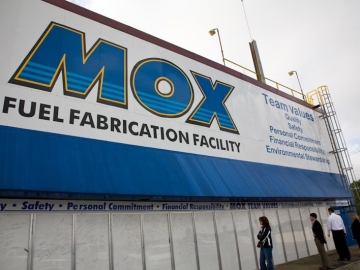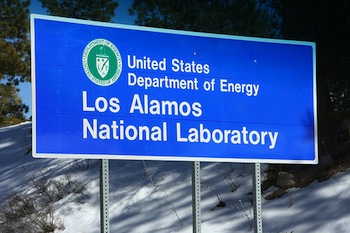
Blog
-
Geiger Readings for November 22, 2014
Latitude 47.704656 Longitude -122.318745Ambient office = 85 nanosieverts per hourAmbient outside = 72 nanosieverts per hourSoil exposed to rain water = 51 nanosieverts per hourRedleaf lettuce from Central Market = 116 nanosieverts per hourTap water = 88 nanosieverts per hourFiltered water = 83 nanosieverts per hourRockfish – Caught in USA = 119 nanosieverts per hour -
Nuclear Reactors 178 – Hearts of America Northwest and Physicians for Social Responsibility Demand Shut Down of Columbia Generating Station
I have often blogged about problems with the cleanup of the Hanford Nuclear Reservation in south central Washington State. The Federal government spend decades developing and manufacturing nuclear weapons there but that ended about twenty five years ago. Despite decades of cleanup, the Hanford site is still one of the most radioactively contaminated places on Earth. In addition to the nuclear waste and waste processing facilities at Hanford, it is also host to the only operating nuclear power reactor in Washington which is called the Columbia Generating Station (CGS). The CGS is owned and operated by Energy Northwest and CGS is the only operating reactor left from the failed attempt to build five reactors in Washington. It supplies about four percent of the electricity for the Pacific Northwest.
Hearts of American Northwest (HAN) and Physicians for Social Responsibility (PSR) recently commissioned a report about the CGS. The report was written by Robert Alvarez of the Institute for Policy Studies. All three of these organizations have been regular critics of the nuclear industry in the United States in general and Hanford in particular.
Alvarez’s report raised concerns about the safety of the spent fuel rods in the cooling pool. Spent fuel rods assemblies are removed from the reactor and placed in a cooling pool for several years that is five stories above the ground in a building next to the reactor. After cooling for several more years, the assemblies can be moved to dry cask storage onsite.
In the event of an emergency such as an earthquake, the spent fuel pool could drain and expose the spent fuel to the open air. Contact with the air would ignite the spent fuel which would result in smoke and radioactive particulates being released into the environment. A deliberate terrorist attack could have the same effect. Such a fire could cause a thermal plume that could spread the radioactive contamination over hundreds of square miles. The disaster at Fukushima left a five story spent fuel cooling pool in a severely damaged pool that could have been drain by another earthquake.
Alvarez also said that almost half of the incidence of radiation exposure to workers at Hanford between 1999 and 2011 took place at the CGS. He expressed concern that nearby cleanup activities could possibly expose the CGS workers to radiation in the event of an accident. HAN and PSR have demanded that CGS be shut down as a public threat.
As might be expected, Energy Northwest (EN) was not pleased by the demand to shut down their power reactor. A spokesperson for EN suggested that Alvarez actually knew very little about their plant. He said that the chances of a fire breaking out in the concrete steel-lined spent fuel pool structure was very remote and not even a part of their disaster planning. The EN spokesperson also downplayed threats to worker safety saying that they had not exceeded the annual federal safety limit for workers’ exposure to radioactivity for the past seventeen years.
The Columbia Generating Station at Hanford:
-
Geiger Readings for November 21, 2014
Ambient office = 83 nanosieverts per hourAmbient outside = 85 nanosieverts per hourSoil exposed to rain water = 103 nanosieverts per hourBanana from Central Market = 118 nanosieverts per hourTap water = 138 nanosieverts per hourFiltered water = 132 nanosieverts per hour -
Nuclear Reactors 177 – U.S. Mixed Oxide Fuel Plant is Behind Schedule and Over Budget
As part of nuclear disarmament, Russia and the U.S. agreed to convert the plutonium in many of their nuclear warheads into fuel for nuclear reactors. The plutonium is mixed with uranium to dilute it producing what is called Mixed Oxide fuel (MOX). For fifteen years, plutonium warheads from Russia were converted to nuclear fuel to burn in U.S. nuclear power reactors. This arrangement is just ending which will cause the price of MOX to rise.
In 2005, the Nuclear Regulatory Commission granted a ten year construction license to Shaw Areva MOX Services (SAMS) for the construction of the first MOX plant in the U.S. That license will run out in 2015 and the MOX plant is far from complete. After a two year delay, actual construction of the MOX plant began in 2007. The MOX plant design was based on the design of the French Melox MOX facility. The U.S. MOX plant was supposed to begin operation in 2016 with an estimated construction cost of about five billion dollars. In 2012, the U.S. Government Accountability Office estimated that the MOX plant would not be ready to operate before 2019 and that it would cost almost eight billion dollars. There have been budget cuts over the years and SAMS only requested three hundred and twenty million dollars for 2014 due to project delays.
SAMS requested an extension of its construction license in May of 2014. They said that there had been significant progress in construction of the MOX plant and that they estimated that the facility was sixty percent complete although some key structures still had to be built including the emergency generator building and the reagents processing building.
SAMS has offered several reasons for the extension request. Since this is the first such plant to be constructed in the U.S., they were not able to draw on prior experiences in such plant construction. They pointed out that the actual annual funding has been less than the project funding requirements for several years. There is a shortage of vendors who produce the necessary components. There is also a shortage of qualified construction workers available for the project. In addition, there was that two-year delay between the grant of the original construction license and the actual beginning of construction.
In October of 2014, the NRC basically said that extension “would not have a significant effect on the quality of the human environment because it does not involve any additional impacts or represent a significant change to those impacts described and analyzed in the previous environmental report and final environmental impact statement.” A week ago, the NRC granted SAMS the requested ten year license extension.
Since the funding for the MOX project comes from Congress, there could be delays in construction introduced by reduction of funding in Congressional budget negotiations. As with many other nuclear construction projects, the MOX project is way behind in schedule and way over its estimated cost.
-
Geiger Readings for November 20, 2014
Ambient office = 99 nanosieverts per hourAmbient outside = 129 nanosieverts per hourSoil exposed to rain water = 108 nanosieverts per hourRomaine lettuce from Central Market = 73 nanosieverts per hourTap water = 74 nanosieverts per hourFiltered water = 65 nanosieverts per hour -
Radioactive Waste 109 – Incompetance and Dishonesty at the Los Alamos National Laboratory Caused Accident at the Waste Isolation Pilot Plant
I have blogged several times about the accidents and radiation releases at the Waste Isolation Pilot Plant (WIPP) near Carlsbad, New Mexico. The WIPP is the single repository for wastes from nuclear weapons development and manufacture in the U.S. In mid-February of 2014, the contents of a drum from the Los Alamos National Laboratory overheated and caused the drum to burst, raising the temperature in the WIPP chamber to a level that could have caused other drums to rupture. Radioactive materials from the burst drum made their way into the ventilation system which was not functioning properly. Plutonium and americium were detected in Carlsbad, over twenty of miles away. The WIPP had to be shut down which has resulted in hundred of problematic drums of waste being left at LANL, WIPP and in temporary storage in Texas. It will take years to repair the damage from the accident and hundreds of millions of dollars.
The LANL was chasing a deadline of June of 2014 to have sent all of the radioactive waste from nuclear weapons development to the WIPP. If the private consortium could make the deadline, that would help it to get an extension of its two billion dollar annual contract from the U.S. Department of energy. In the summer of 2013, one batch of waste at LANL was found to be far too acidic to be transported to the WIPP. The official policy of LANL called for stopping work with that acidic waste until a specific set of reviews were conducted with respect to how to treat the waste. Such a process is time consuming and expensive and it might have interfered with meeting the June 2014 deadline. Instead of following its own guidelines, the lab and its subcontractors took shortcuts. LANL added a neutralizer to the waste to change its pH and added an organic wheat based kitty litter to absorb excess liquid. One of the subcontractors said that he was not an expert on the chemistry of the wastes at LANL and he requested that LANL experts review the treatment of the waste. This was not done. It turns out that the additives basically turned the contents of the drums of waste into potential bombs.
Drums of the treated acidic waste were shipped to WIPP for permanent disposal. Every drum that is shipped to the WIPP is supposed to be accompanied by documents that give a detailed and complete account of the contents of the drum. The documents that came with the acidic waste drums did not contain the required information. There was no mention of the high acidity, the neutralizer or the organic kitty litter. Most chemists would have recognized the explosive nature of the contents of the drums if they knew that organic kitty litter was being mixed with the nitrate salts in the waste.
For two years before the accident this year, the LANL would not allow inspectors who conducted annual permitting audits for New Mexico’s Environmental Department into the area where waste was treated for shipment. The WIPP did not find out about the explosive chemistry in the burst drum until after the accident. Even after the drum burst last February, the LANL continued to withhold critical information from the people at the WIPP. It appears that there may have been a typo in the LANL guidelines that led to the switch to organic kitty litter.
If the documentation for the waste shipments had been accurate and complete, they would not have been allowed on the road at all. The pending report from the National Nuclear Security Administration’s Accident Investigation Board is expected to be critical of the behavior of the staff at LANL and their subcontractors who were apparently more interested in meeting the deadline than they were in the safety of the wastes they were shipping. Once again this illustrates a point that I keep repeating. Corporations cannot be relied upon to follow nuclear safety regulations.
-
Geiger Readings for November 19, 2014
Ambient office = 108 nanosieverts per hourAmbient outside = 83 nanosieverts per hourSoil exposed to rain water = 93 nanosieverts per hourCrimini Mushrooms from Central Market = 81 nanosieverts per hourTap water = 79 nanosieverts per hourFiltered water = 57 nanosieverts per hour






